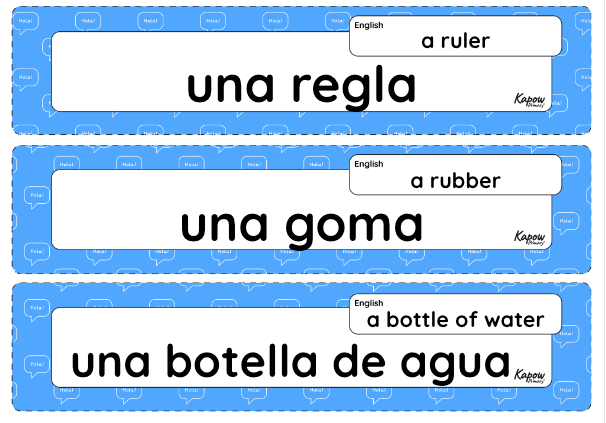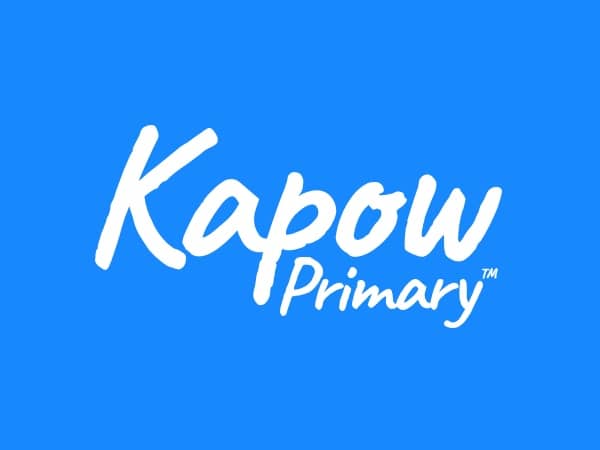Y3/4 (A) Unit 4: Classroom objects in Spanish
Following classroom instructions, naming classroom objects and exploring grammar rules such as masculine and feminine nouns, plurals, and forming a negative construction.
Unit outcomes
Pupils who are secure will be able to:
- Match spoken classroom instructions with a corresponding symbol; respond to most classroom instructions with an action.
- Name the seven classroom items in Spanish, usually remembering which article, un or una, is needed; sort classroom items into two groups of either masculine or feminine and understand how we might identify the gender of each noun.
- Speak in short sentences, starting with Tengo and including a plural noun phrase by choosing a number in Spanish to quantify and adding an ‘s’ at the end of the noun.
- Answer a question in Spanish using the negative, No tengo… – I do not have…, followed by a classroom item.
- Read and understand short sentences in Spanish, including conjunctions, to match the labels with each rucksack picture with reasonable levels of success.
- Write a short paragraph to describe what they have in a rucksack, which meets most of the success criteria.
Suggested prior learning
Lessons
Y3/4 (A): Lesson 1: Follow the instructions
- To recognise and respond to spoken classroom instructions.
Y3/4 (A): Lesson 2: Un or una?
- To name school bag objects and identify if they are masculine or feminine nouns.
Y3/4 (A): Lesson 3: What classroom items do you have?
- To identify how a noun phrase changes in the plural form when describing classroom items.
Y3/4 (A): Lesson 4: I do not have…
- To construct a phrase using the negative form, no tengo – I do not have.
Y3/4 (A): Lesson 5: What is in your school bag?
- To read and interpret sentences featuring the conjunctions y and pero.
Y3/4 (A): Lesson 6: En mi mochila
- To compose a piece of writing describing what is in a school bag.
Key skills
Key knowledge
Related content
Unit resources

Knowledge organiser: Spanish – Classroom objects
Aimed at pupils, a single page that gives key facts and definitions from the unit.

Vocabulary display: Classroom objects in Spanish
A display version of the key vocabulary from the unit 'Classroom objects in Spanish'.

Translations: Classroom objects in Spanish
Translations of key texts and transcripts from resources in this unit.
Cross-curricular opportunities
English
Writing – vocabulary, grammar and punctuation (Year 2)
Pupils should learn how to use:
- Sentences with different forms: statement, question, exclamation, command.
- Subordination (using when, if, that or because) and co-ordination (using or, and or but).
Writing – vocabulary, grammar and punctuation (Year 3)
Pupils should be taught to:
Develop their understanding of the concepts set out in English Appendix 2 by:
- Extending the range of sentences with more than one clause by using a wider range of conjunctions, including when, if, because, although.
See National curriculum - English - Key stages 1 and 2.

